How sweet it is.
More than 10 million M&Ms brand candy lovers in the US and 200 other countries have voted to add purple to the popular, button-like candy's rainbow of colors, manufacturer Masterfoods USA, a subsidiary of Mars, Inc, announced on Wednesday at a gala web-cast party in New York.
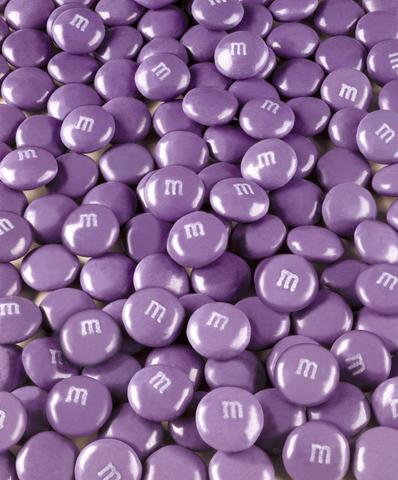
PHOTO: AP
"We're very excited about the turnout and consumer involvement with M&Ms," Masterfoods USA president Paul Michaels said. Purple won, Michaels said, because "It's a popular color, it's a royal color. People love it around the world."
The new color garnered 41 percent of the vote, beating out aqua's 37 percent and pink's 19 percent. It will appear in the product's crinkly brown bags in August, adding to blue, red, yellow, orange, brown and green.
Specially marked packages containing the three choices were available prior to May 31 when "the polls" closed for the company-sponsored Global Color Vote, the second such promotion and first to include votes from outside the US including Indonesia, Australia, Paris and China.
The candy's original six colors were brown, yellow, orange, red, green and violet, ousted in 1949 in favor of tan, in turn replaced in 1995 by US voters' choice of blue.
Mars Inc founder Forrest Mars Sr. created the candy in the late 1930s based on Spanish Civil War soldiers' hard sugar-encased chocolates. First marketed in 1941, M&Ms'similar ability to resist melting made it a staple food of World War II American GI's.
The candy, whose letters stand for Mars and co-founder Murrie, still boasts its 1954 slogan, "The milk chocolate that melts in your mouth, not in your hand."
In the heated, US$13 billion a year US chocolate market, M&Ms has to have a hard shell. It is the world's top single brand, according to Michaels, but faces fierce competition in America from Hershey's variety of chocolate products including Hershey bars and Reeses peanut butter cups, making Hershey's the top US confectionery brand, according to the Chocolate Manufacturers Association.
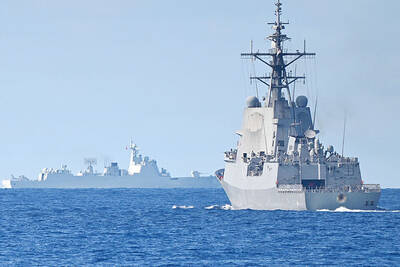
RESPONSE: The transit sends a message that China’s alignment with other countries would not deter the West from defending freedom of navigation, an academic said Canadian frigate the Ville de Quebec and Australian guided-missile destroyer the Brisbane transited the Taiwan Strait yesterday morning, the first time the two nations have conducted a joint freedom of navigation operation. The Canadian and Australian militaries did not immediately respond to requests for comment. The Ministry of National Defense declined to confirm the passage, saying only that Taiwan’s armed forces had deployed surveillance and reconnaissance assets, along with warships and combat aircraft, to safeguard security across the Strait. The two vessels were observed transiting northward along the eastern side of the Taiwan Strait’s median line, with Japan being their most likely destination,
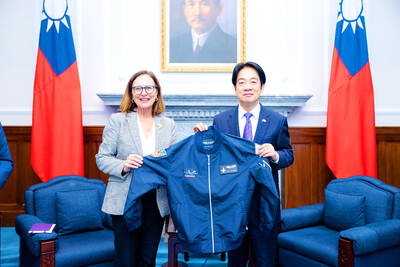
‘NOT ALONE’: A Taiwan Strait war would disrupt global trade routes, and could spark a worldwide crisis, so a powerful US presence is needed as a deterrence, a US senator said US Senator Deb Fischer on Thursday urged her colleagues in the US Congress to deepen Washington’s cooperation with Taiwan and other Indo-Pacific partners to contain the global security threat from China. Fischer and other lawmakers recently returned from an official trip to the Indo-Pacific region, where they toured US military bases in Hawaii and Guam, and visited leaders, including President William Lai (賴清德). The trip underscored the reality that the world is undergoing turmoil, and maintaining a free and open Indo-Pacific region is crucial to the security interests of the US and its partners, she said. Her visit to Taiwan demonstrated ways the
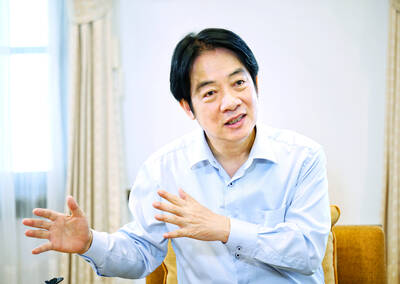
GLOBAL ISSUE: If China annexes Taiwan, ‘it will not stop its expansion there, as it only becomes stronger and has more force to expand further,’ the president said China’s military and diplomatic expansion is not a sole issue for Taiwan, but one that risks world peace, President William Lai (賴清德) said yesterday, adding that Taiwan would stand with the alliance of democratic countries to preserve peace through deterrence. Lai made the remark in an exclusive interview with the Chinese-language Liberty Times (sister paper of the Taipei Times). “China is strategically pushing forward to change the international order,” Lai said, adding that China established the Asia Infrastructure Investment Bank, launched the Belt and Road Initiative, and pushed for yuan internationalization, because it wants to replace the democratic rules-based international
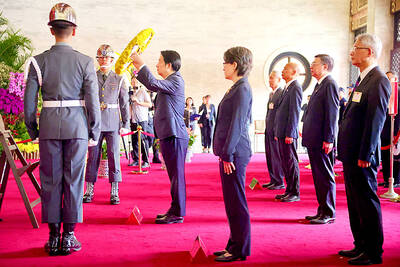
WAR’S END ANNIVERSARY: ‘Taiwan does not believe in commemorating peace by holding guns,’ the president said on social media after attending a morning ceremony Countries should uphold peace, and promote freedom and democracy, President William Lai (賴清德) said yesterday as Taiwan marked 80 years since the end of World War II and the Second Sino-Japanese War. Lai, Vice President Hsiao Bi-khim (蕭美琴) and other top officials in the morning attended a ceremony at the National Revolutionary Martyrs’ Shrine in Taipei’s Zhongshan District (中山) to honor those who sacrificed their lives in major battles. “Taiwanese are peace-loving. Taiwan does not believe in commemorating peace by holding guns,” Lai wrote on Facebook afterward, apparently to highlight the contrast with the military parade in Beijing marking the same anniversary. “We